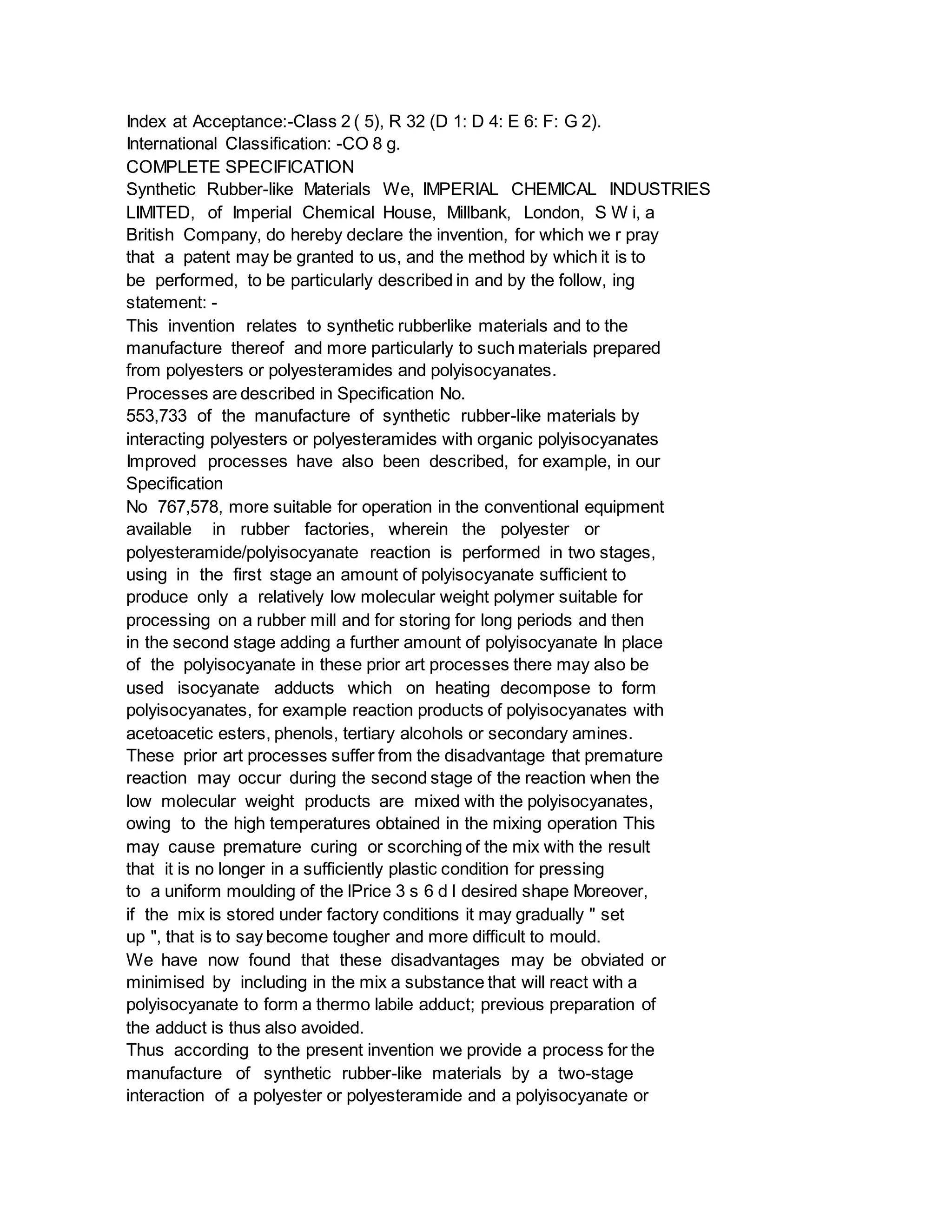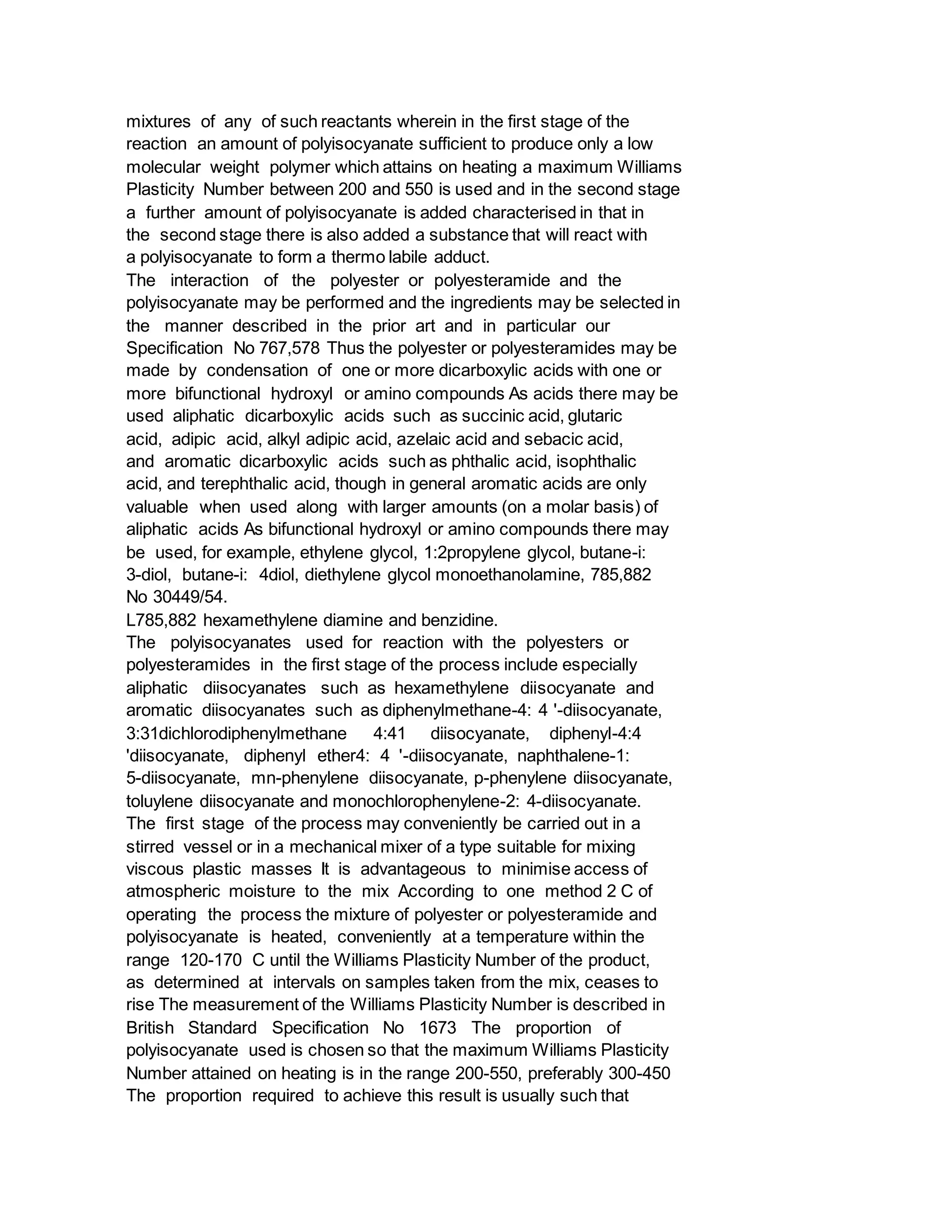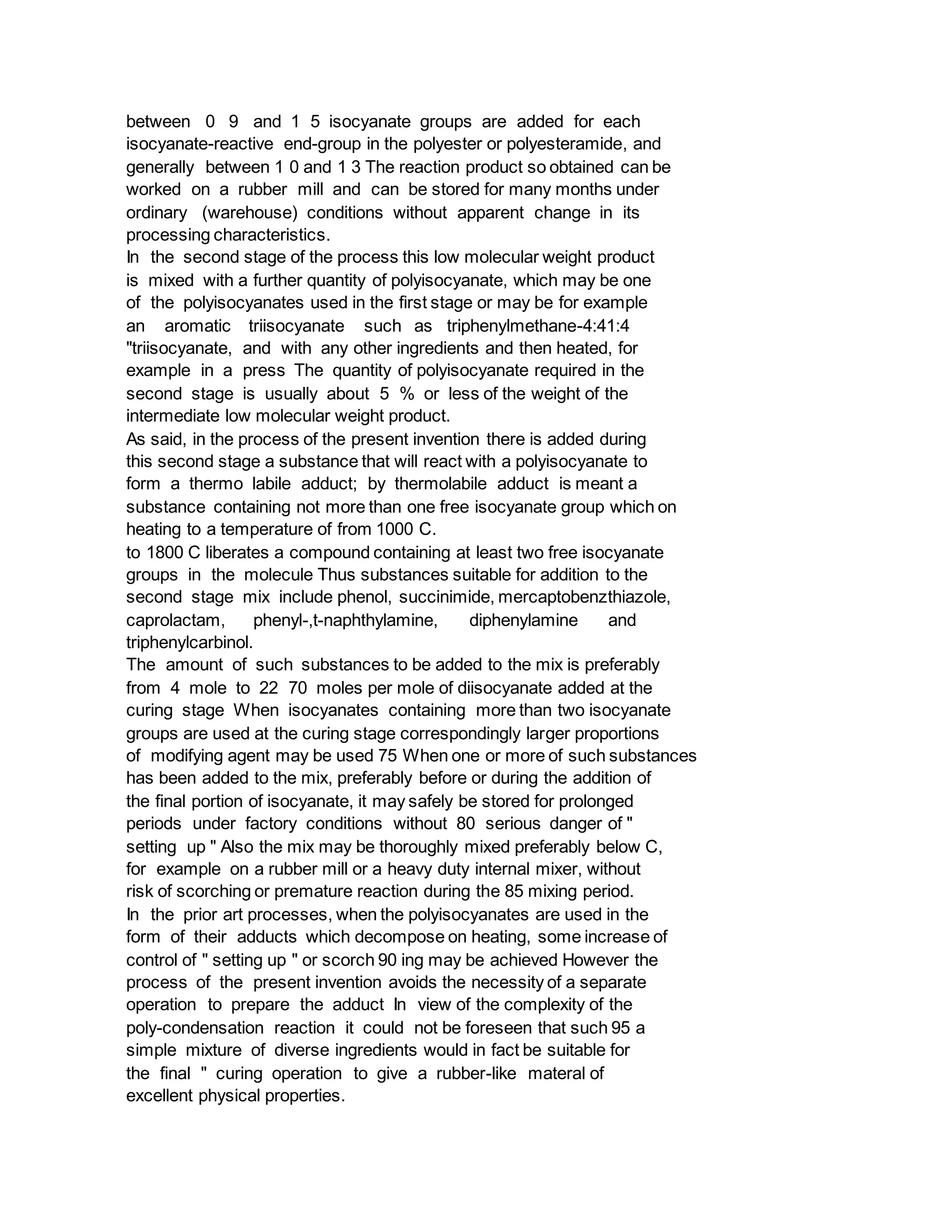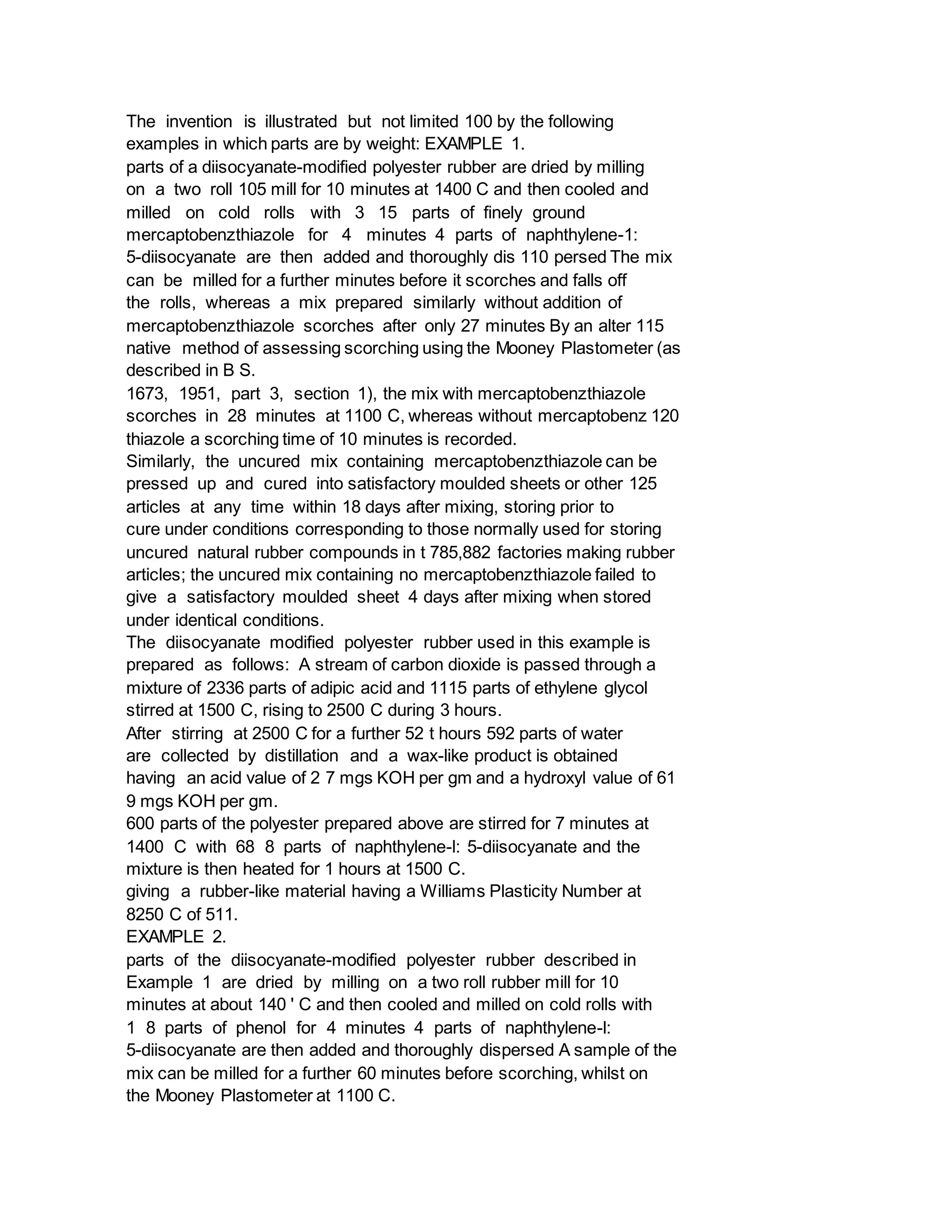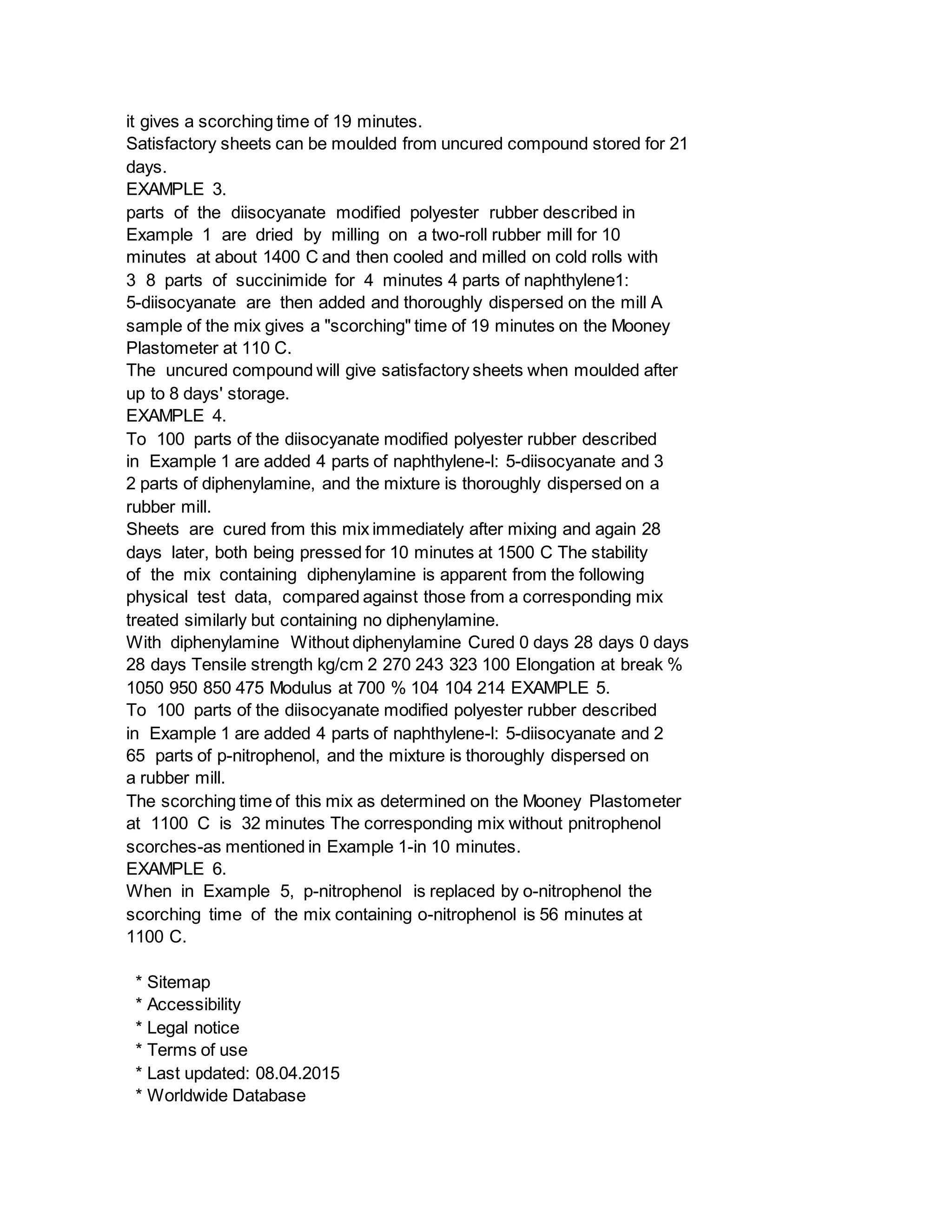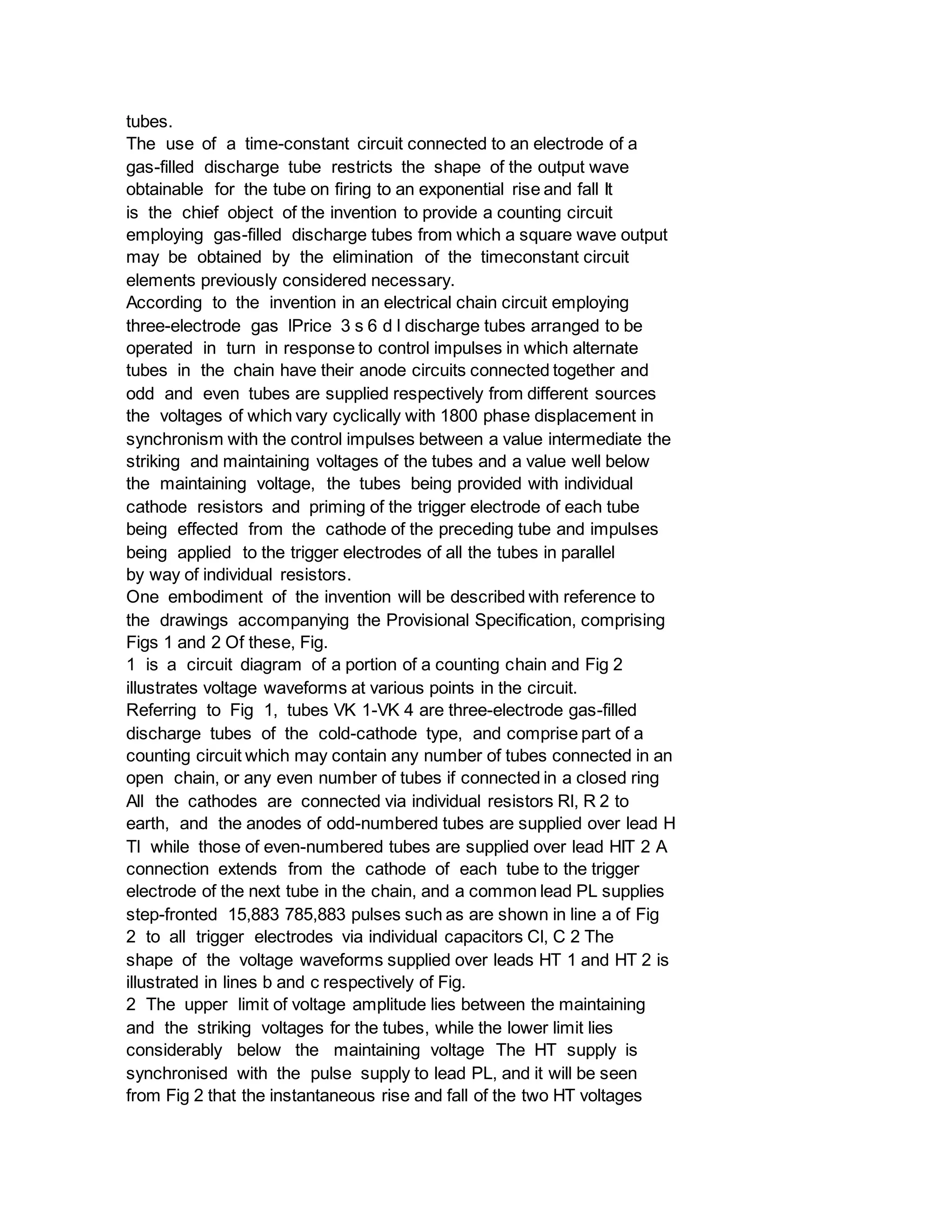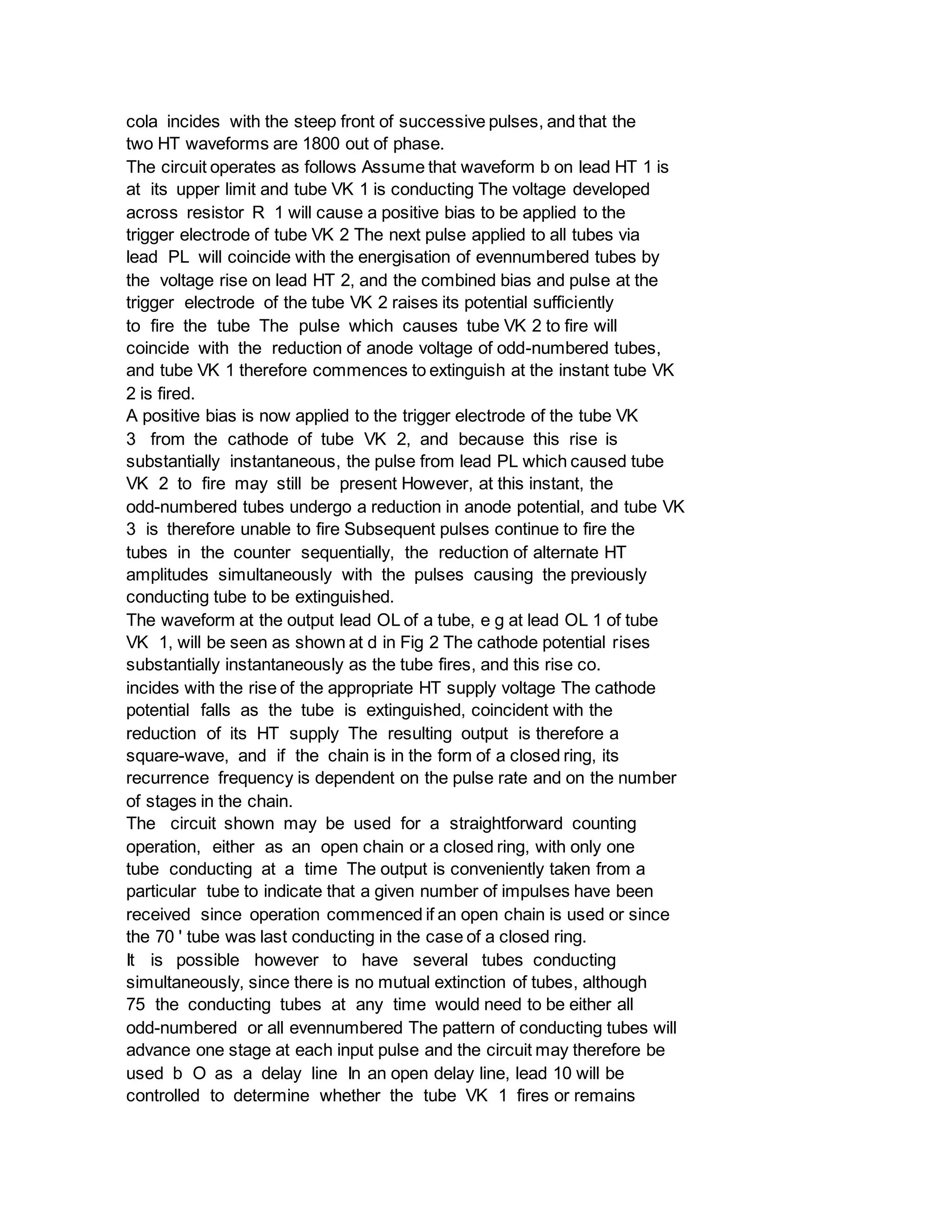This document describes an apparatus for storing intelligence signals as electric pulses on a magnetic medium. It provides:
1) A storage medium with multiple storage elements that can each store a signal.
2) Means for recording signals in the storage elements and reading the recorded signals.
3) Adjustable means for examining only a selected portion of a read signal, by varying the position within the signal width that is examined.
![* GB785879 (A)
Description: GB785879 (A) ? 1957-11-06
Improvements in or relating to apparatus for the storage of intelligence
signals
Description of GB785879 (A)
A high quality text as facsimile in your desired language may be available
amongst the following family members:
US2974312 (A)
US2974312 (A) less
Translate this text into Tooltip
[79][(1)__Select language]
Translate this text into
The EPO does not accept any responsibility for the accuracy of data
and information originating from other authorities than the EPO; in
particular, the EPO does not guarantee that they are complete,
up-to-date or fit for specific purposes.
PATENT SPECIFICATION
Inventor: DESMOND SYDNEY RIDLER 7 ' i o Date of Application and filing
Complete Specification: Feb 25, 1954.
-j 01 No 5537/54.
L W > Complete Specification Published: Nov 6, 1957.
Index at acceptance:-Class 106 ( 1), C( 1 D: IE: 2 D: 2 G).
International Classification:-G 06 f.
COMPLETE SPECIFICATION
Improvements in or relating to Apparatus for the Storage of
Intelligence Signals We, STANDARD TELEPHONES AND CABLES LIMITED, a
British Company, of Connaught I-louse, 63, Aldwych, London, W C 2,
England, do hereby declare the invention, for which we pray that a
patent may be granted to us, and the method by which it is to be
performed, to be particularly described in and by the following
statement: -](https://image.slidesharecdn.com/hcfr8u8yrnynqfahcowk-signature-f1a3728054edcda4438b43643ccbe8b63e4cc7ebe95801d83504f81b02927617-poli-160125210051/75/5471-5475-output-1-2048.jpg)
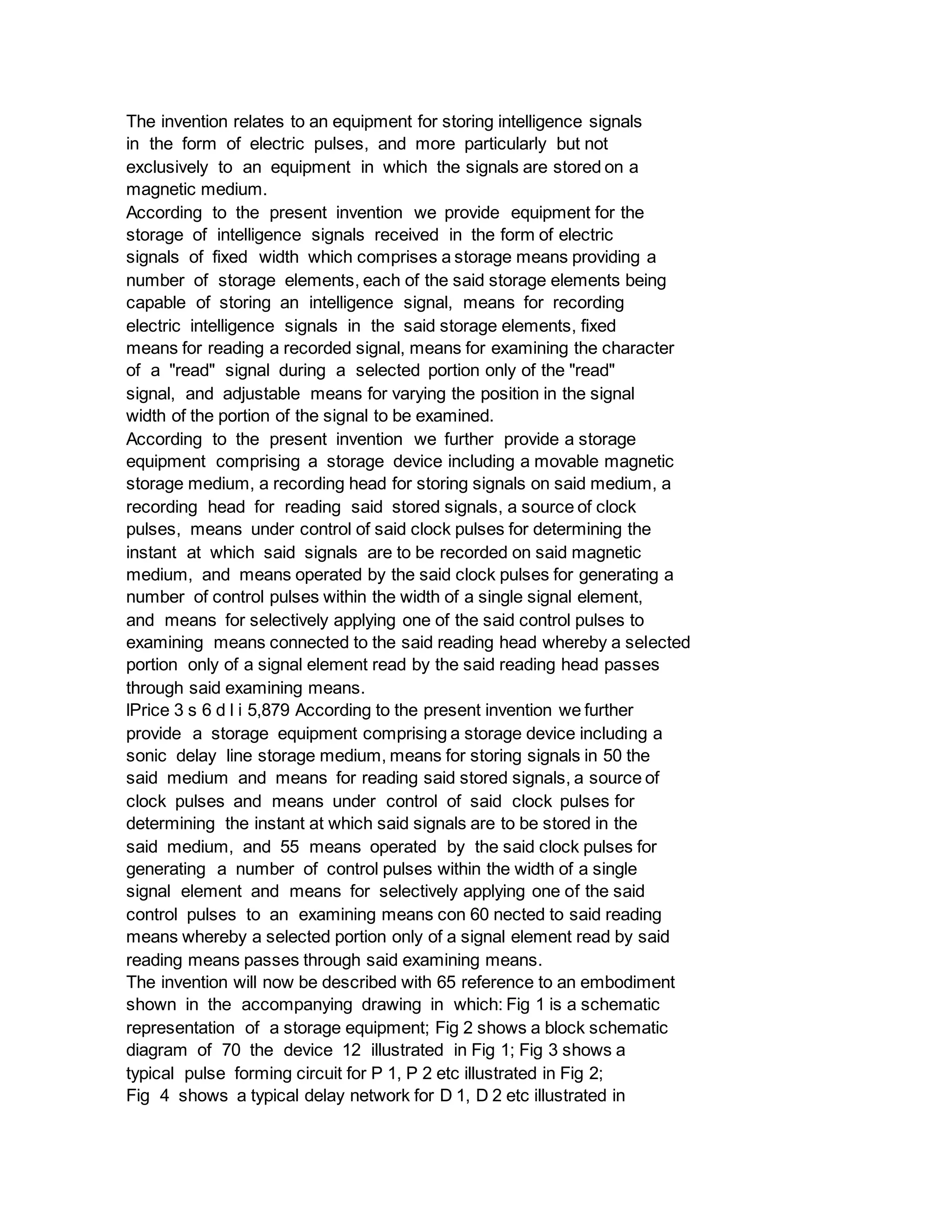
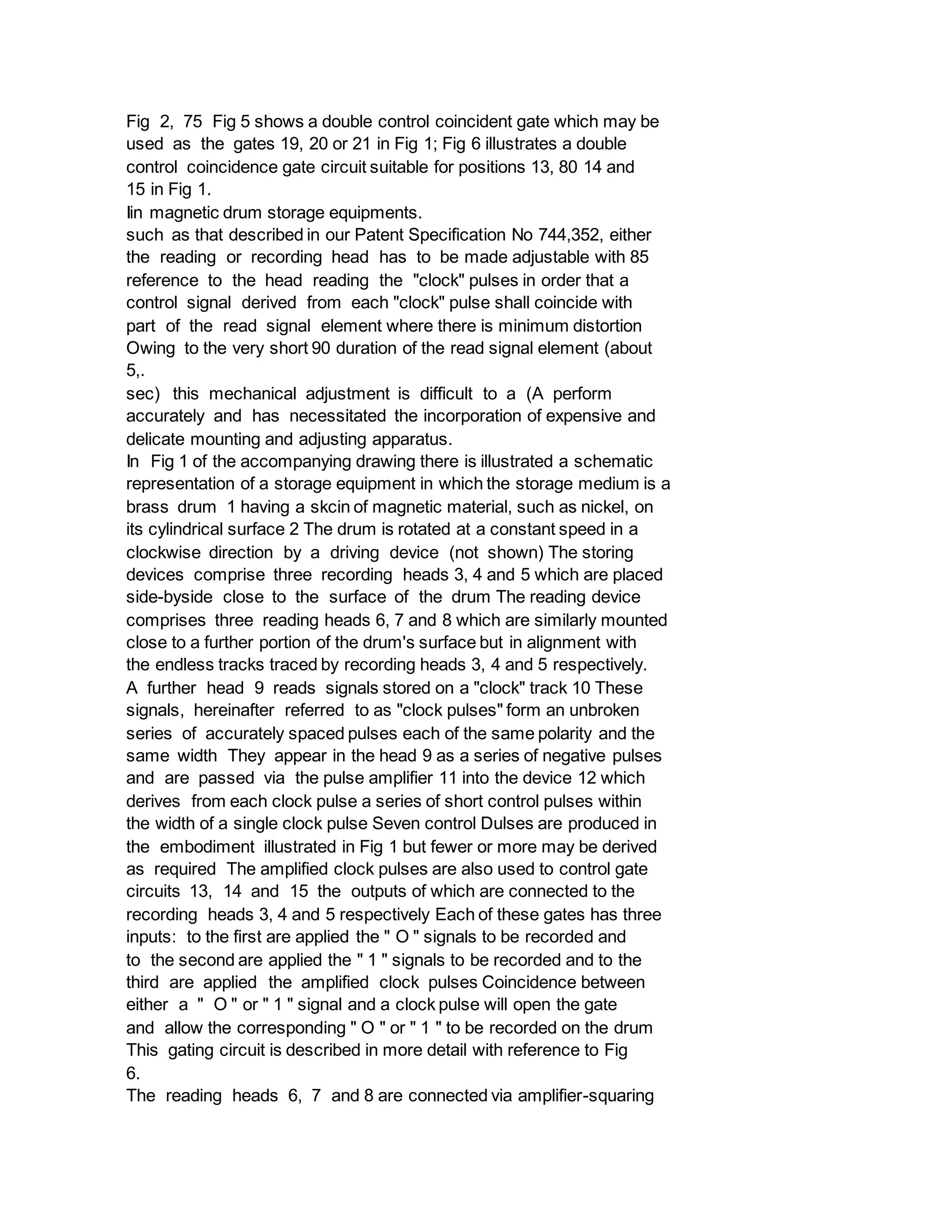
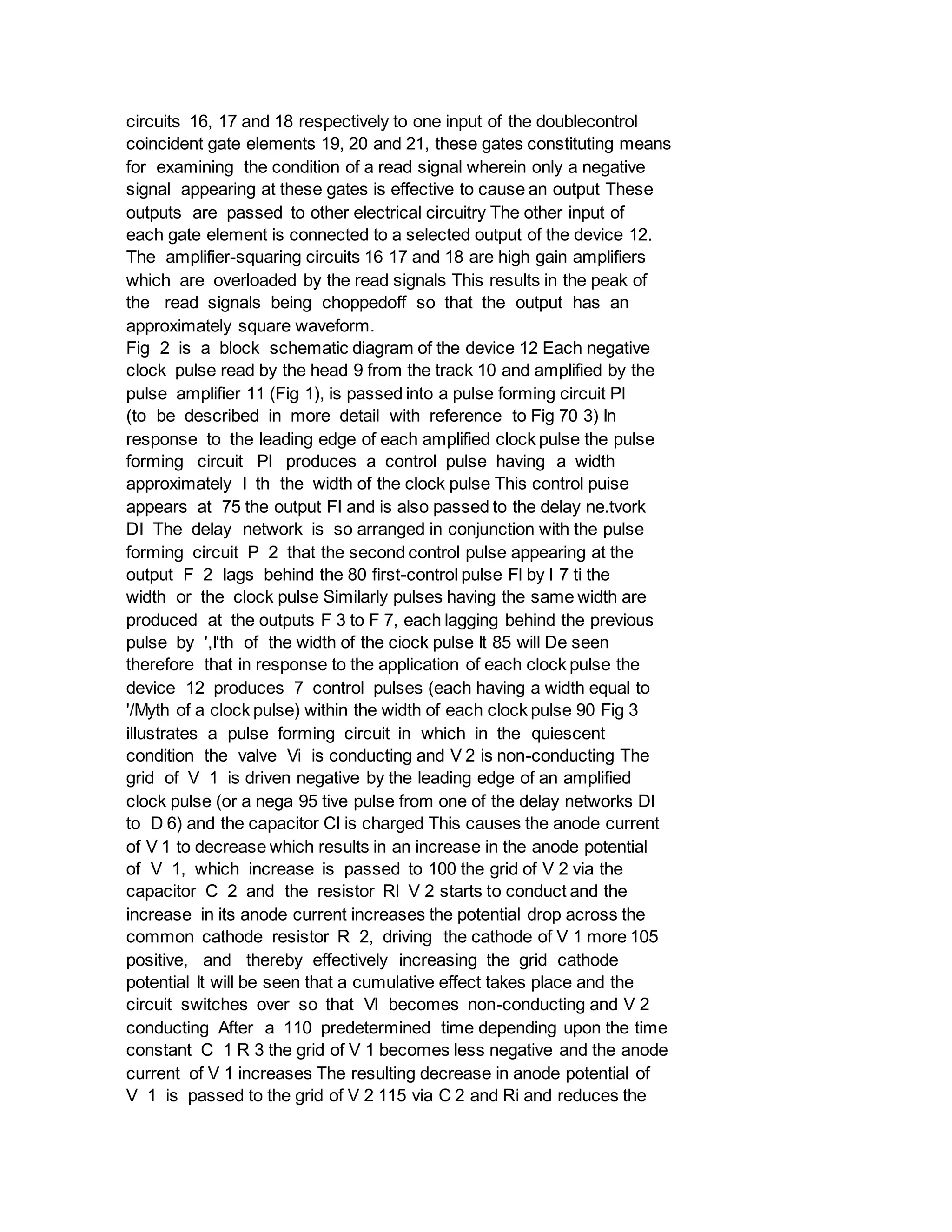
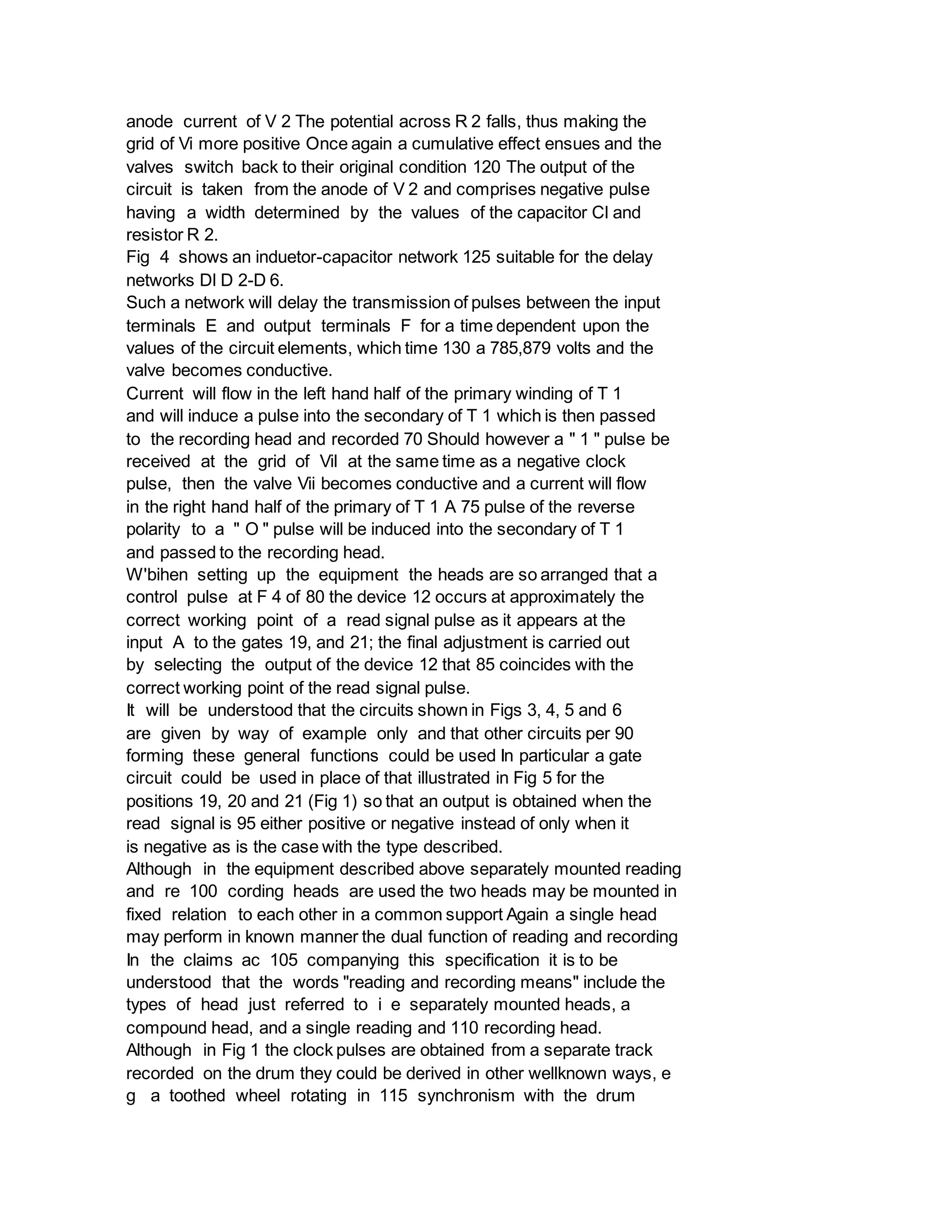
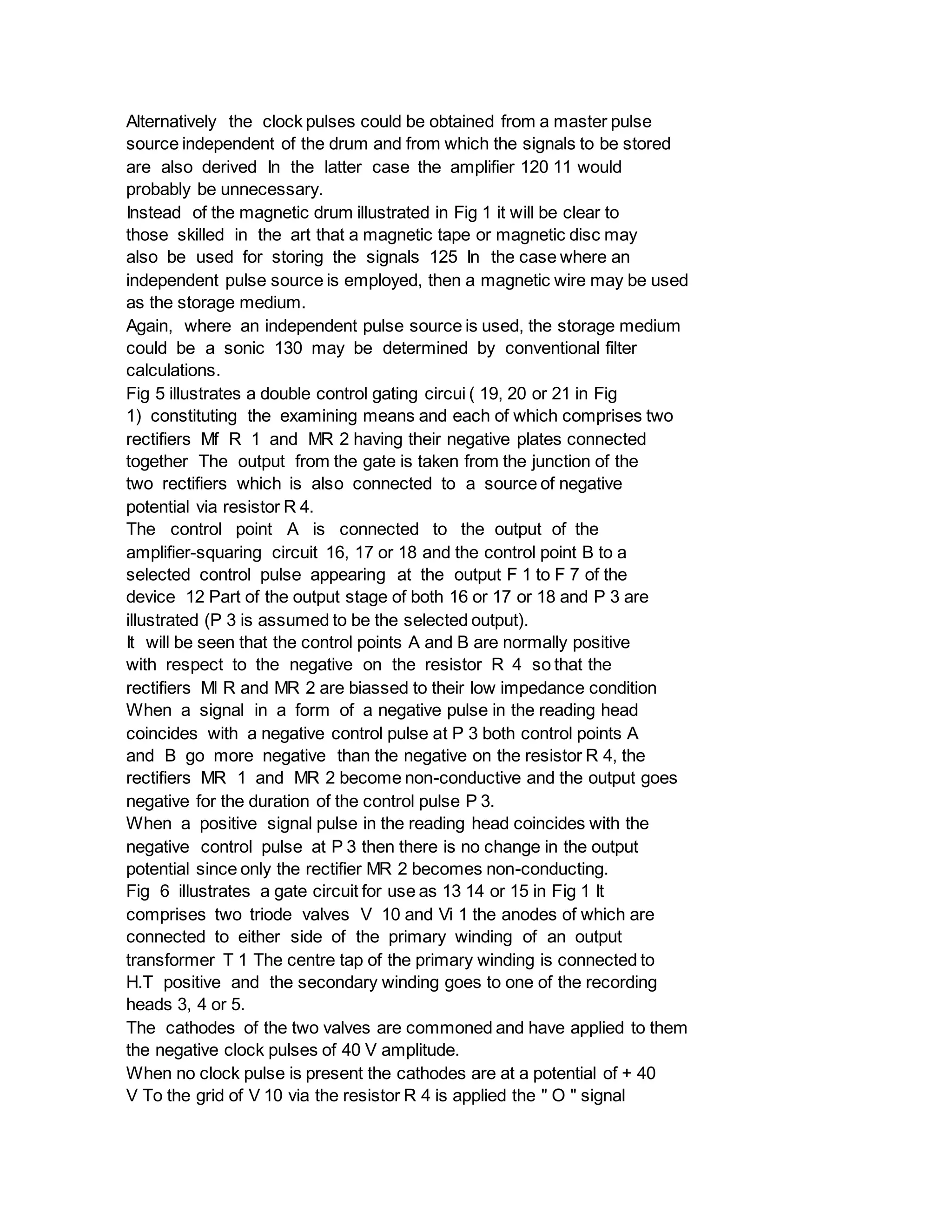
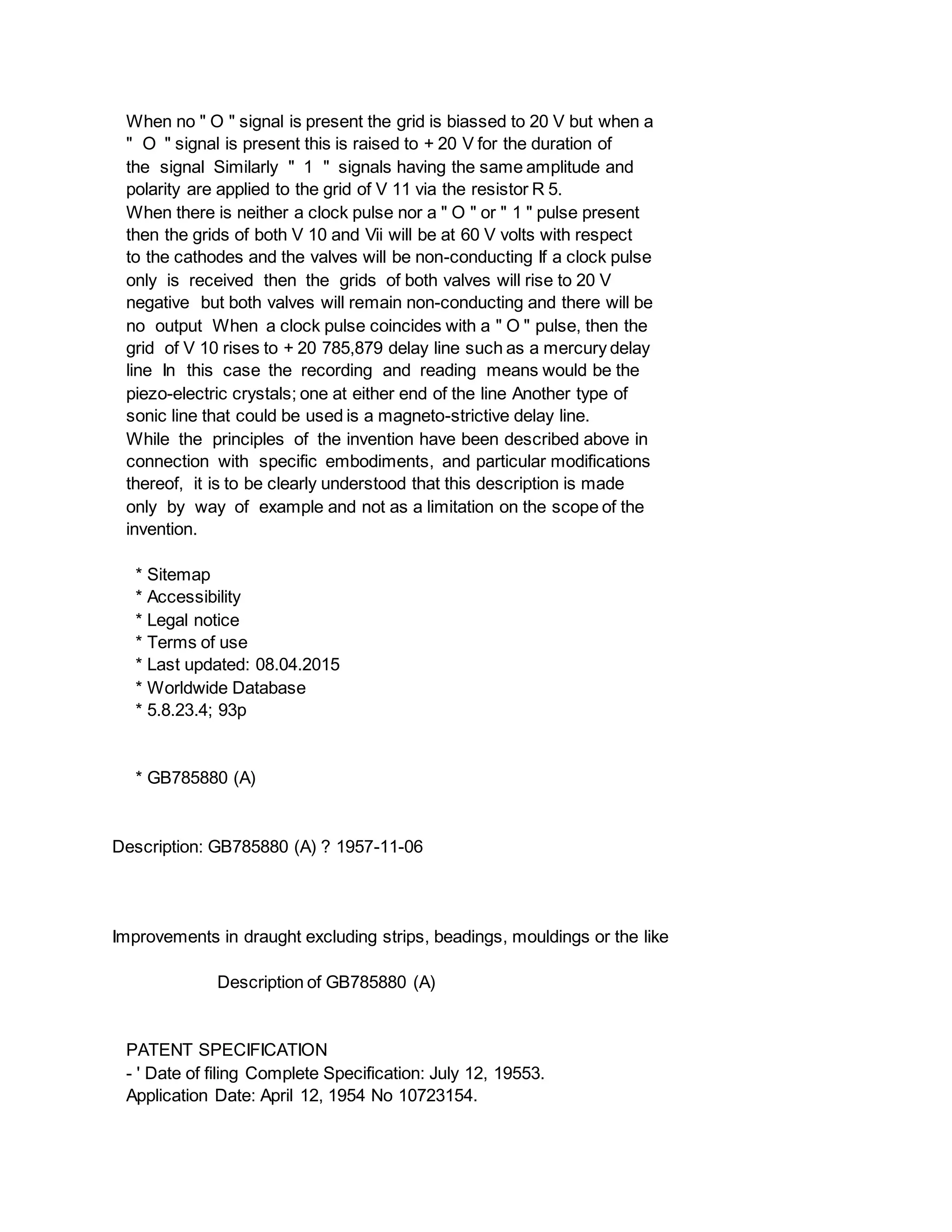
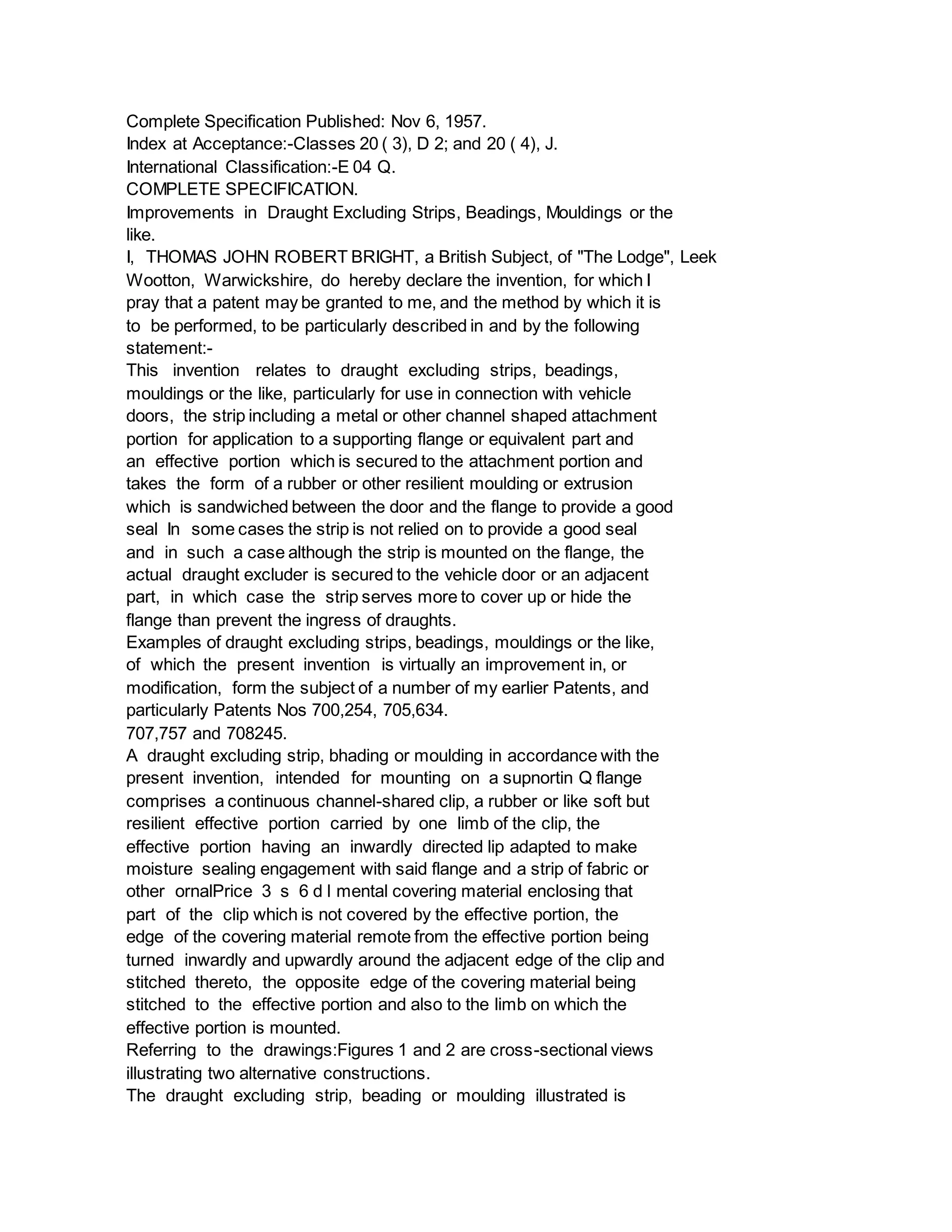
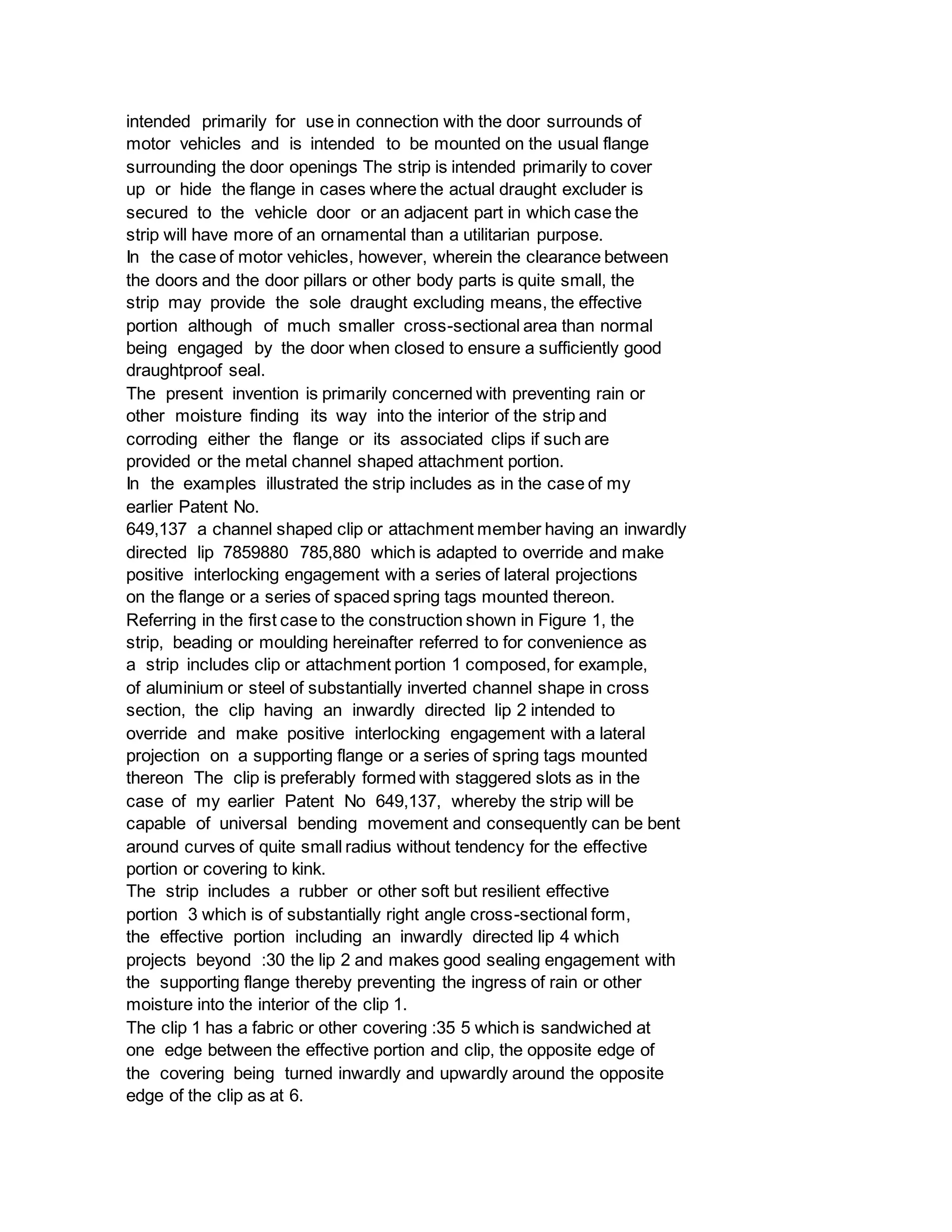
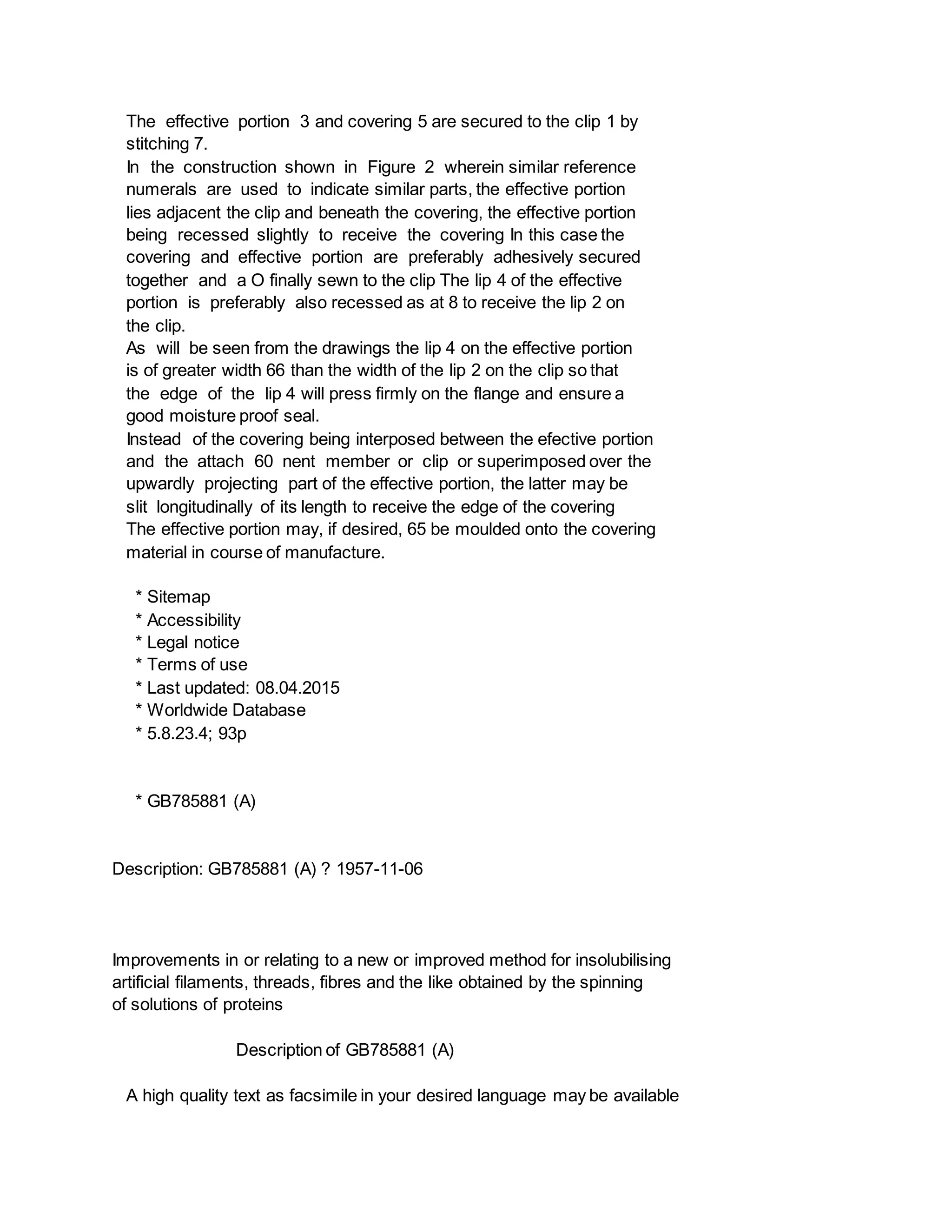
![amongst the following family members:
BE539677 (A) FR1134049 (A)
BE539677 (A) FR1134049 (A) less
Translate this text into Tooltip
[80][(1)__Select language]
Translate this text into
The EPO does not accept any responsibility for the accuracy of data
and information originating from other authorities than the EPO; in
particular, the EPO does not guarantee that they are complete,
up-to-date or fit for specific purposes.
PATENT SPECIFICATION
Inventors: WALTER LAMB DAVIDSON and ROYMcGILLIVRAY Date of filing
Complete Specification April 7, 1955.
Application Date July 9, 1954.
785,881 No 20130/54.
Complete Specification Published Nov 6, 1957.
Index at acceptance: -Class 2 ( 2), B 2 C 5.
International Classification: -D Olf.
COMPLETE SPECIFICATION
Improvements in or relating to a new or improved method for
Insolubilising Artificial'Filaments, Threads, Fibres and the like
obtained' by the Spinning of Solutions of Proteins W Ve, IMPERIAL
CHEMICAL INDUSTRIES LIMITED, of Imperial Chemical House, Millbank,
London, S W 1, a British Company, do hereby declare the invention, for
which we pray that a patent may be granted to us, ahd the method by
which it is to be performed, to be particularly described in and by
the following statement: -
The present invention relates to a new or improved method for
insolubilising artificial filaments, threads, fibres and the like
obtained by the spinning of solutions of proteins, for instance peanut
protein or casein in aqueous alkaline or other suitable aqueous
solvent media into suitable acidified saline coagulating baths.
By the term " insolubilised filaments is to be understood filaments
which are insoluble in an aqueous bath containing 0.1 % sulphuric acid
and 0 25 % sodium sulphate when immersed therein for 90 minutes at 970
C.
A number of proposals have already been made for effecting the
insolubilisatioh of coagulated wet spun protein filaments by means of
formaldehyde in the presence of an acidified highly concentrated
aqueous saline solution as for example according to the method](https://image.slidesharecdn.com/hcfr8u8yrnynqfahcowk-signature-f1a3728054edcda4438b43643ccbe8b63e4cc7ebe95801d83504f81b02927617-poli-160125210051/75/5471-5475-output-11-2048.jpg)
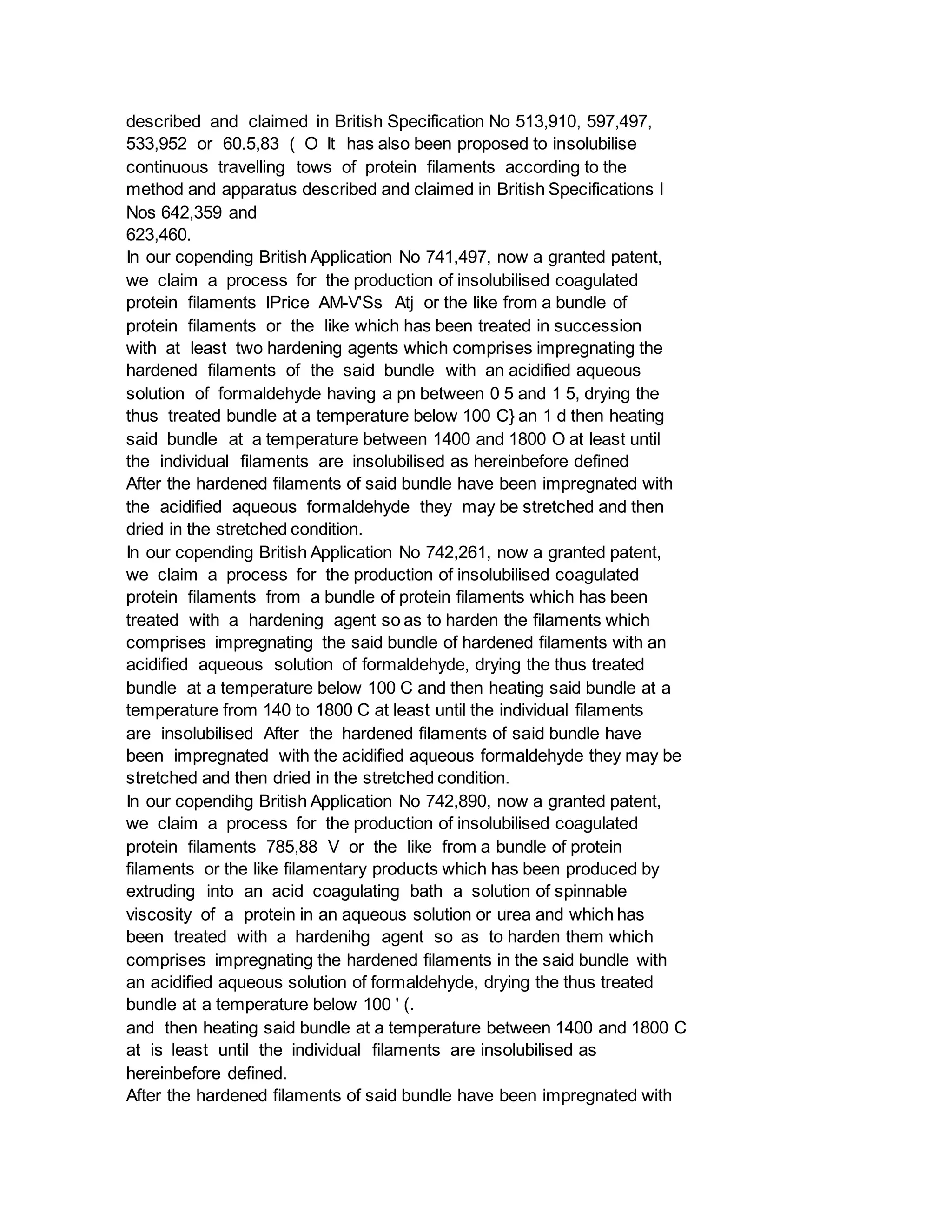
![the acidified aqueous formaldehyde they may stretched and then dried
in the stretched condition.
In our copending British Application
* Sitemap
* Accessibility
* Legal notice
* Terms of use
* Last updated: 08.04.2015
* Worldwide Database
* 5.8.23.4; 93p
* GB785882 (A)
Description: GB785882 (A) ? 1957-11-06
Synthetic rubber-like materials
Description of GB785882 (A)
A high quality text as facsimile in your desired language may be available
amongst the following family members:
DE1025618 (B) FR1143097 (A)
DE1025618 (B) FR1143097 (A) less
Translate this text into Tooltip
[80][(1)__Select language]
Translate this text into
The EPO does not accept any responsibility for the accuracy of data
and information originating from other authorities than the EPO; in
particular, the EPO does not guarantee that they are complete,
up-to-date or fit for specific purposes.
PATENT SPECIFICATION
Inventors: PHILIP COWEYJOHNSON and HENRY GEORGE WHITE Date of filing
Complete Specification Oct 5, 1955.
Application Date Oct 22, 1954.
Complete Specification Published Nov 6, 1957.](https://image.slidesharecdn.com/hcfr8u8yrnynqfahcowk-signature-f1a3728054edcda4438b43643ccbe8b63e4cc7ebe95801d83504f81b02927617-poli-160125210051/75/5471-5475-output-13-2048.jpg)
